
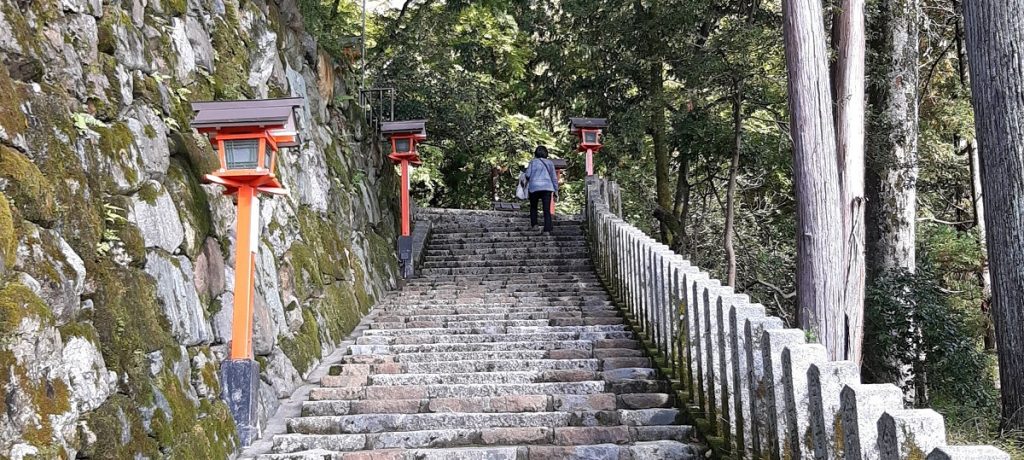
Kurama town is located at the northern limits of Kyoto city in Sakyo Ward, but despite being part of the city’s wider metropolitan area, it feels like a world away. The ‘town’ has one road running through the middle, with traditional shops and houses lining its length. Mountains and trees tower on either side of the road and life seems slower. Escaping the crowds is one reason to go, but the main attraction of the valley is Kurama-dera, a mountain temple complex with hiking trails that boasts over 41 small and large shrines, temples, altars, statues and more. The hiking route is easy enough for most able bodied people to enjoy without breaking into a sweat, and connects to another small town in a neighbouring valley, Kibune. The Kurama to Kibune trail is only about 2km long, but with so much to see, today we’ll just look at the way up.
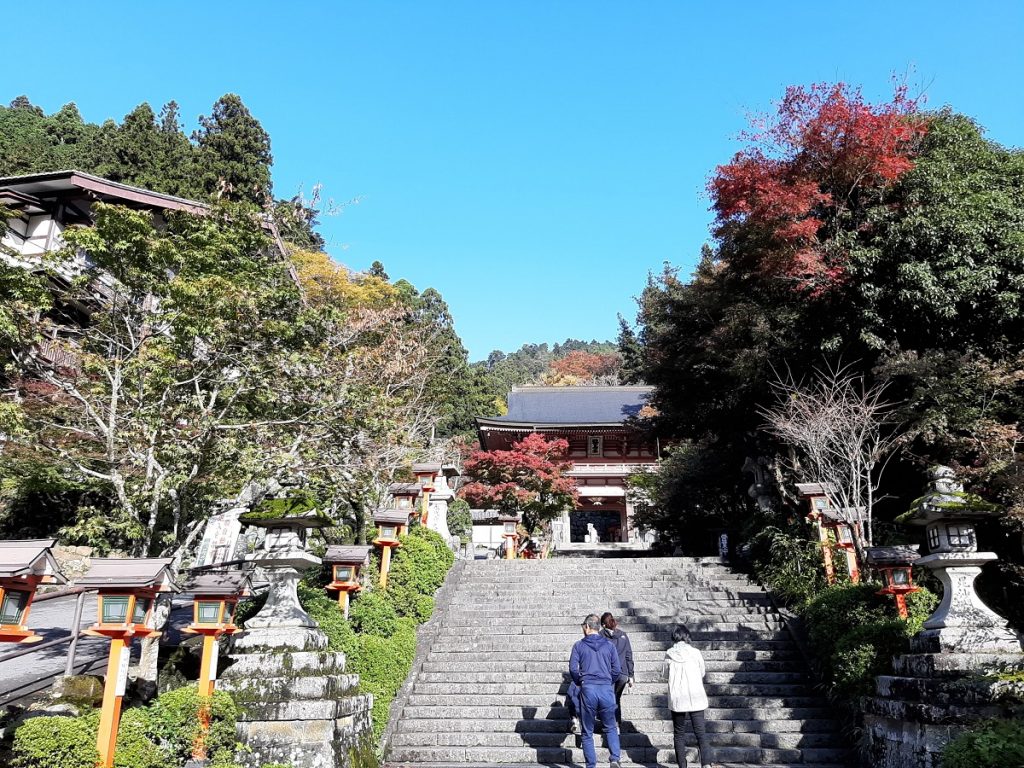
The start of the trail
Unlike many temples and shrines in Japan, whose origins are unknown, Kurama-dera’s is well documented. It was founded in 770 by Gancho, a disciple of Ganjin, the chinese monk who brought buddhism to Japan. Gancho had a dream of a great source of spiritual energy to the north of Kyoto city and ventured out to find it. Despite getting lost along the way, Gancho found the site but was attacked by a demon there. He was nearly eaten, but his prayers for help were answered by Bishamonten, the Guardian of the North, who toppled a tree onto the demon. Gancho built a small hermitage on the site to pay respects to Bishamonten for saving him.
In 794, the capital of Japan moved from Nara to Kyoto, and with it came an influx of wealthy nobles and imperial followers. One notable clan, the Fujiwara’s, came too and became aware of the hermitage after Fujiwara Issendo had a vision of The Thousand Arms Kannon (A goddess of compassion to whom the Fujiwara clan often dedicated temples to). Two years later in 796, the clan donated money for the hermitage to be changed into a large temple where both Bishamonten and Kannon could be worshipped.
Kurama-dera was originally a Tendai sect temple, but in 1947 the head monk Shigaraki Koun created his own school of Buddhist thought, Kurama-Kokyo. Inspired and created from several religions, Koshinto, Onmydo and Shugendo, the syncretic school is different from other sects, with its focus on nature worship and a unique trinity of gods. The Sonten trinity is only worshipped at Kurama-Dera and is made up of: Bishamonten, Kannon and Kurama’s unique deity Gohomaoson. Within the Sonten trinity, The Sun, Earth and Moon are also represented, and seen as the cosmic forces that created all life. Within the temple complex, the priests hope that visitors will be able to appreciate the beautiful ecosystem, and the experience of “feeling alive”.
The architecture of the temple complex is very interesting, not least because the buildings are not really the main focus of worship here, but rather the entire mountain itself is. Buddhist temples and shinto shrines are both found within the complex, with a focus on nature worship and the unique gods of Kurama-Kokyo. Of the over 40 shrines, altars and statues on the way, the main architectural highlights of the upward journey (from bottom to top) include:
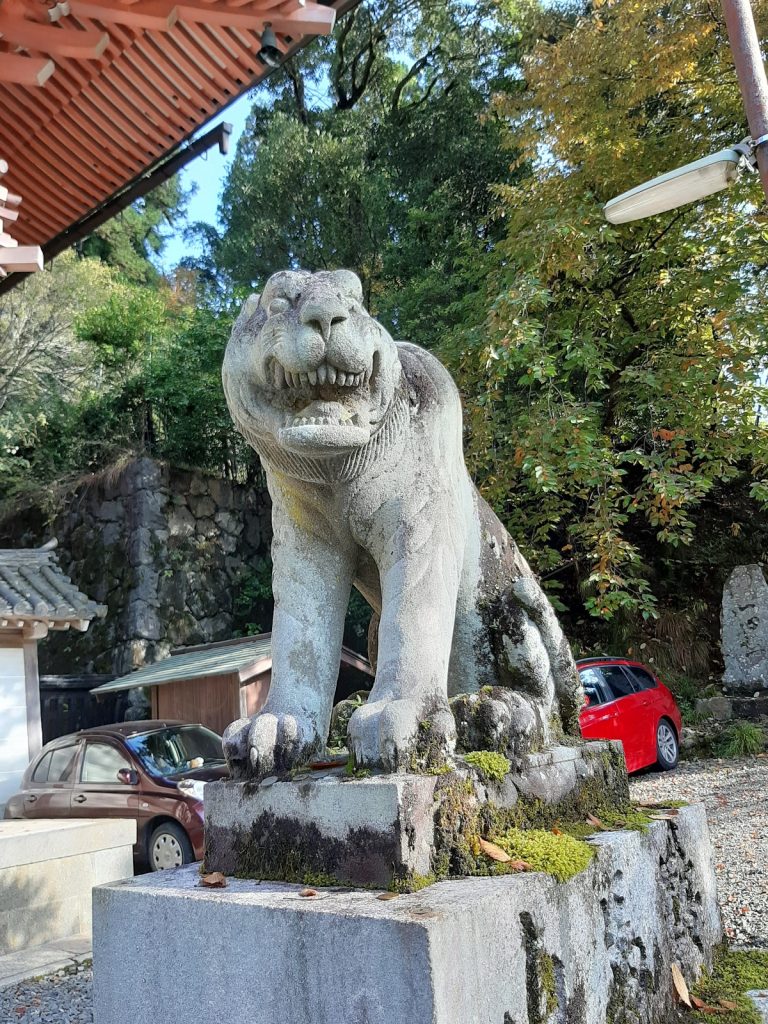
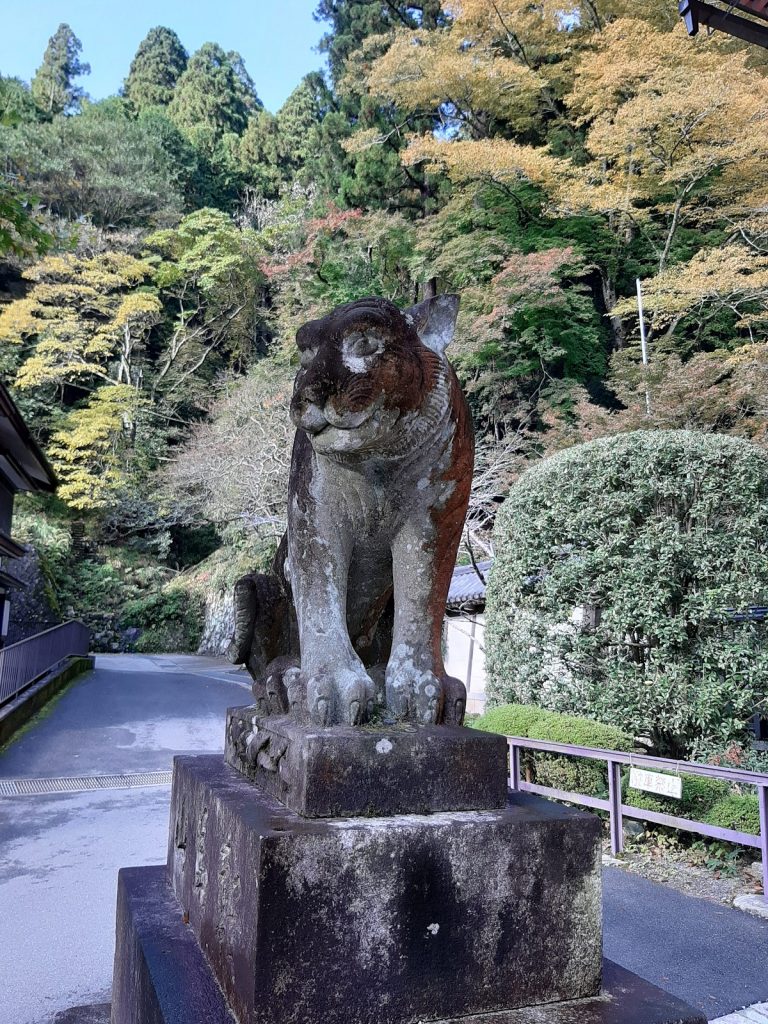
While many major Buddhist temples are guarded by Nio statues, and Shinto shrines can be protected by shishi (Lion-dogs) or Inari foxes, Kurama has a unique set of guardians, tigers. As with other protectors, their mouths are formed as if saying ‘A’ and ‘Un’, the first and last letters of the sanskrit alphabet, symbolising the beginning and the end of all life (think alpha and omega). Tigers are present here as they are the messengers of Bishamonten. On the first and last days of the year, special prayers are offered at the temple and the services are said to take place on the First and Last day of the Tiger. They can be found at the complex’s entrance as well as outside the kondo on the mountain’s summit.
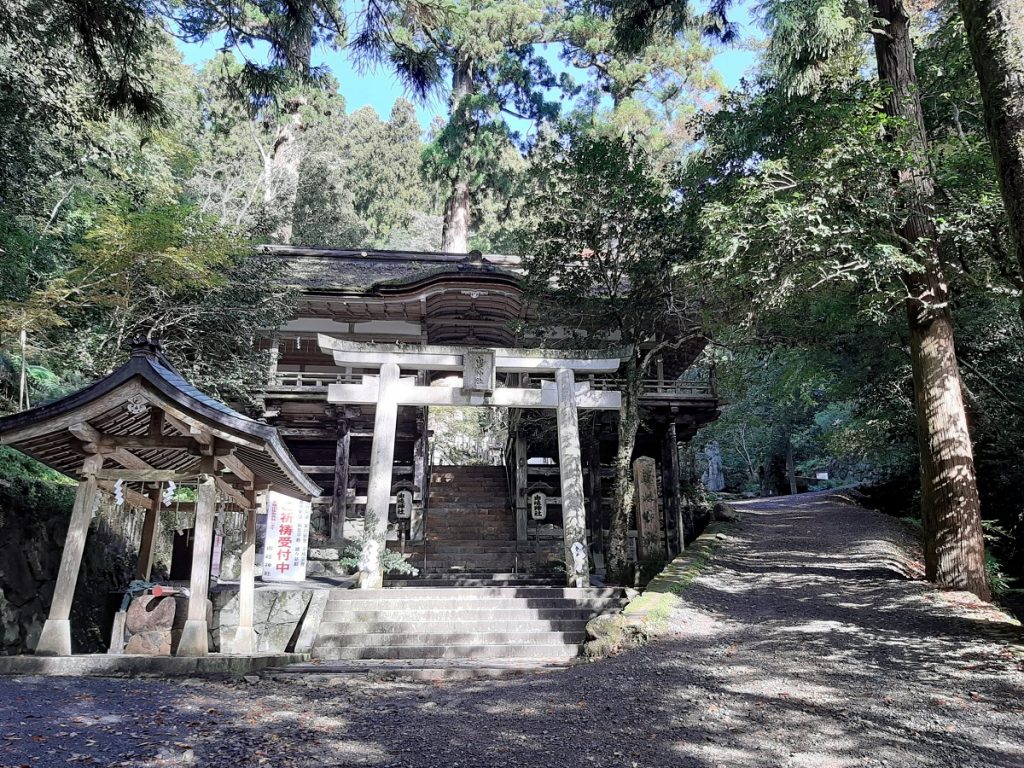
The wooden architecture blends into the forest around it
Moving up the mountain from the first set of tigers brings you to the Yuki shrine, which despite being within the temple complex, is separate from Kurama-Dera. Relocated here in 940, this simple shinto shrine is built of wood and houses an ancient cedar tree that is 53 meters tall. Praying to the giant 800 year old tree is said to help your dreams come true.
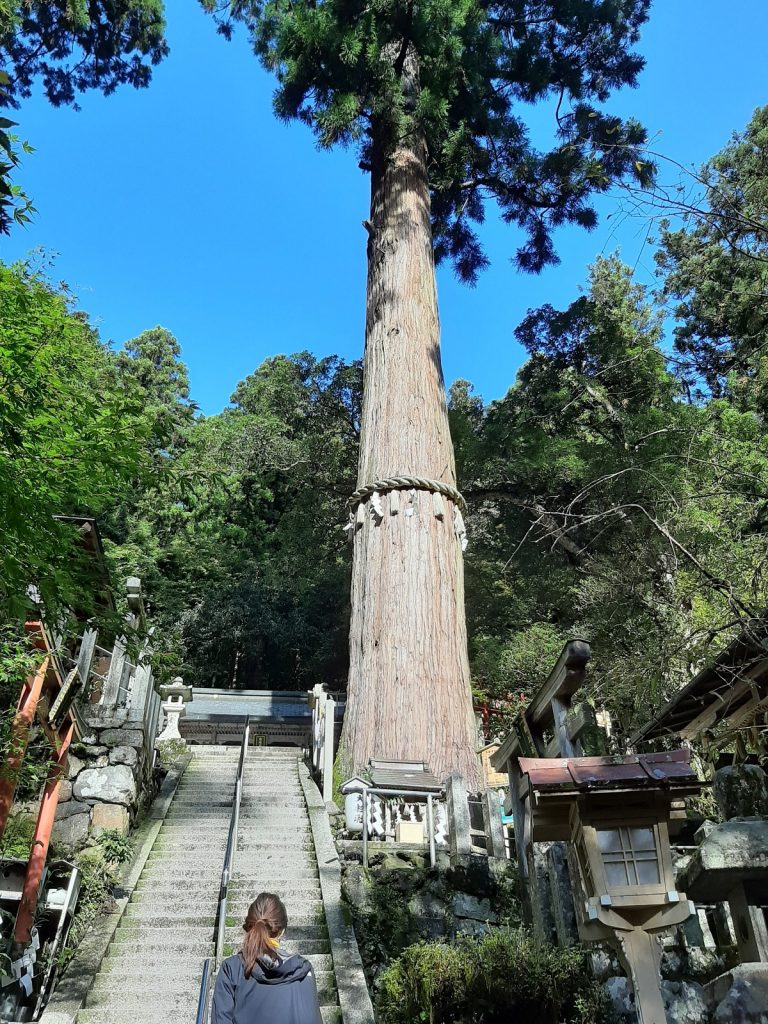
The immense tree within the Yuki Shrine
Within the shrine, another aspect of Kurama’s history can be found, the tengu. Tengu are legendary creatures from the shinto religion and the mountain is believed to be home to Sojobo, the king of the tengu. Tengu are characterised by their red skin, long noses and birdlike features. They are traditionally mountain folk, with strong ties to nature. Legend says that during the Heike Rebellion (A war between the Taira and Minamoto clans), Minamoto no Yoshitsune, one of Japan’s greatest samurai, was trained by Sojobo after his parents were assassinated. After the assassination, the Taira clan sent Yoshitsune to Kurama-dera so that he would be trained as a monk and not be able to gain power and take revenge. Unfortunately for the Taira clan, the king of the tengu summoned Yoshitsune each night and trained him in the art of the katana. Once grown to adulthood, Yoshitsune left the temple and took his revenge, eventually helping to defeat the Taira clan in 1185.
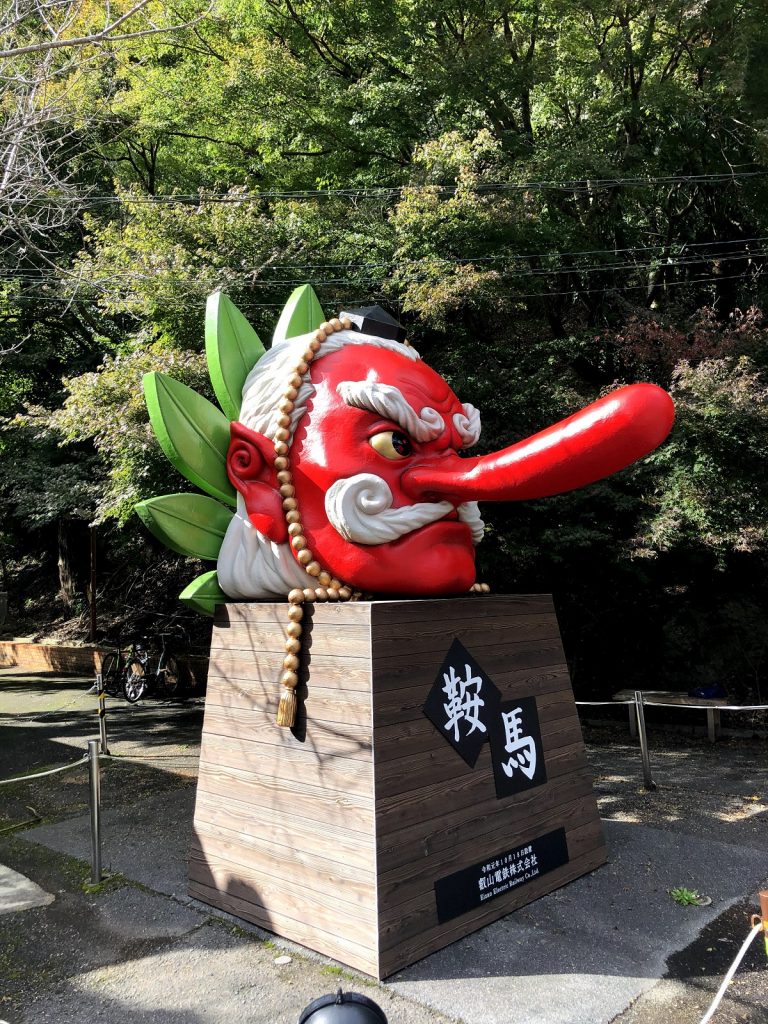
Tengu statue at Kurama station
Tengu masks and statues can be seen all around Kurama, most notably at the station and with the tengu omikuji (lucky fortune) that can be bought at the Yuki shrine. The fortunes come with a very cool tengu keyring and are well worth buying for this unique keyring that easily beats those offered in the souvenir shops around the town.
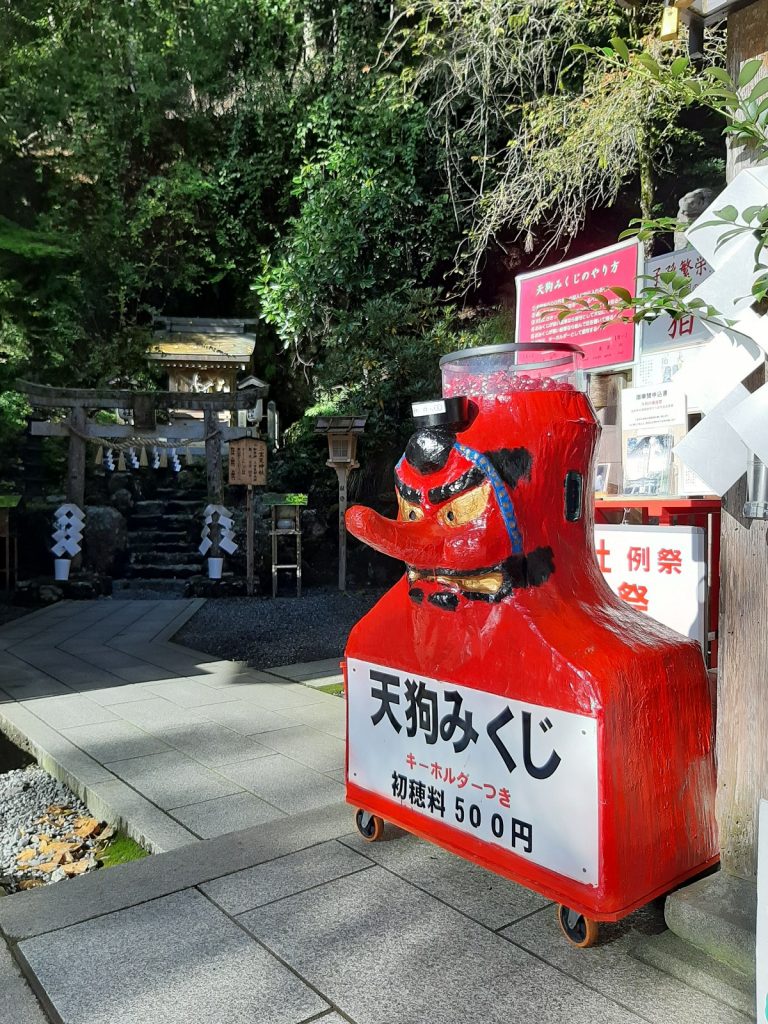
Tengu fortunes at the Yuki Shrine
Continuing up the mountain trail takes you past numerous small altars, shrines and statues which may not be the most interesting ones around, but the mountain path lined with trees and bright vermillion lanterns more than makes up for it. It is a beautiful path, and although there is a cable car that can take you up a little more quickly, the 30 minute walk is a much more rewarding option for the able bodied.
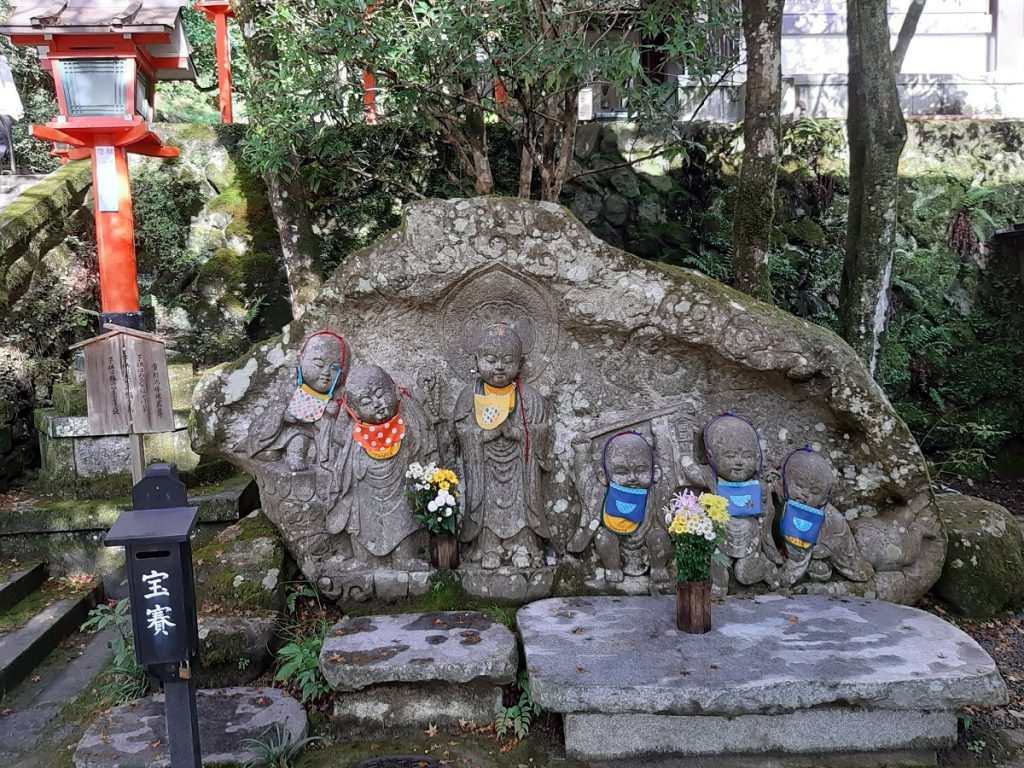
Many small shrines and altars can found along the way
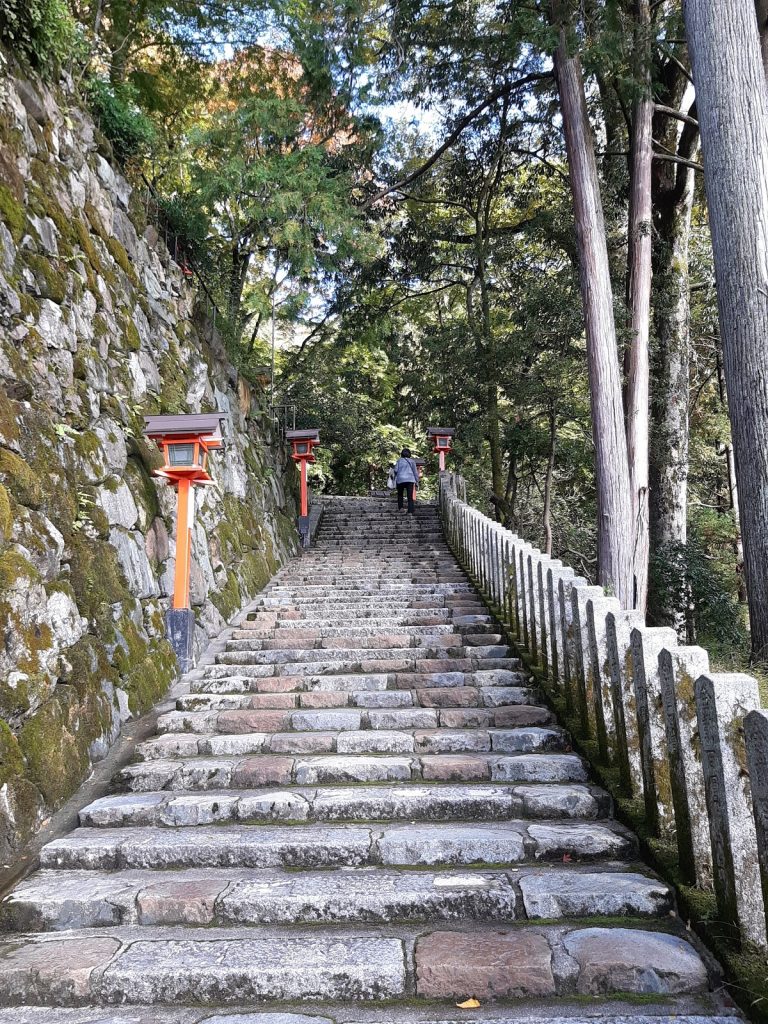
Beautiful lanturn lined paths make up much of the journey
At the top of the mountain at an altitude of 410 meters, Kurama-dera’s Kondo, or main hall can be found. The large vermillion buddhist temple is situated in a large flat courtyard and offers stunning views of the valley. You’ll be forgiven for thinking that it looks quite new, because it is. While the original is centuries old, it has been burned down many times in its history and the current building is a 1971 reconstruction. The sacred statues within may only be seen every 60 years, with the next viewing many years away.
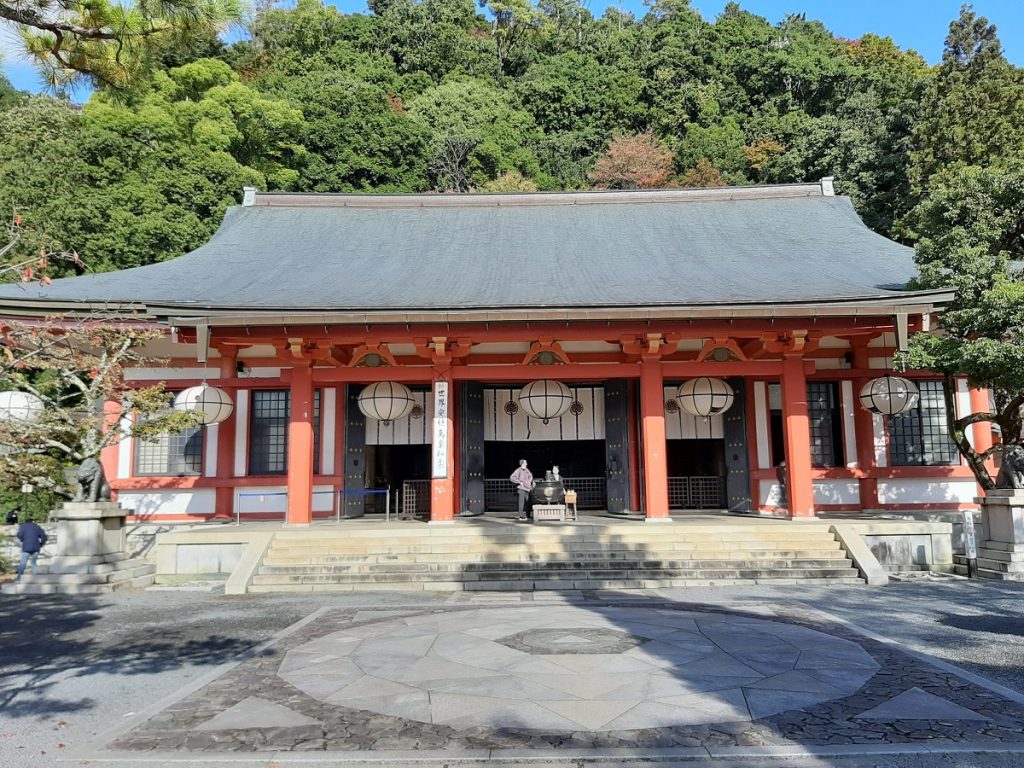
The Kondo in all its glory
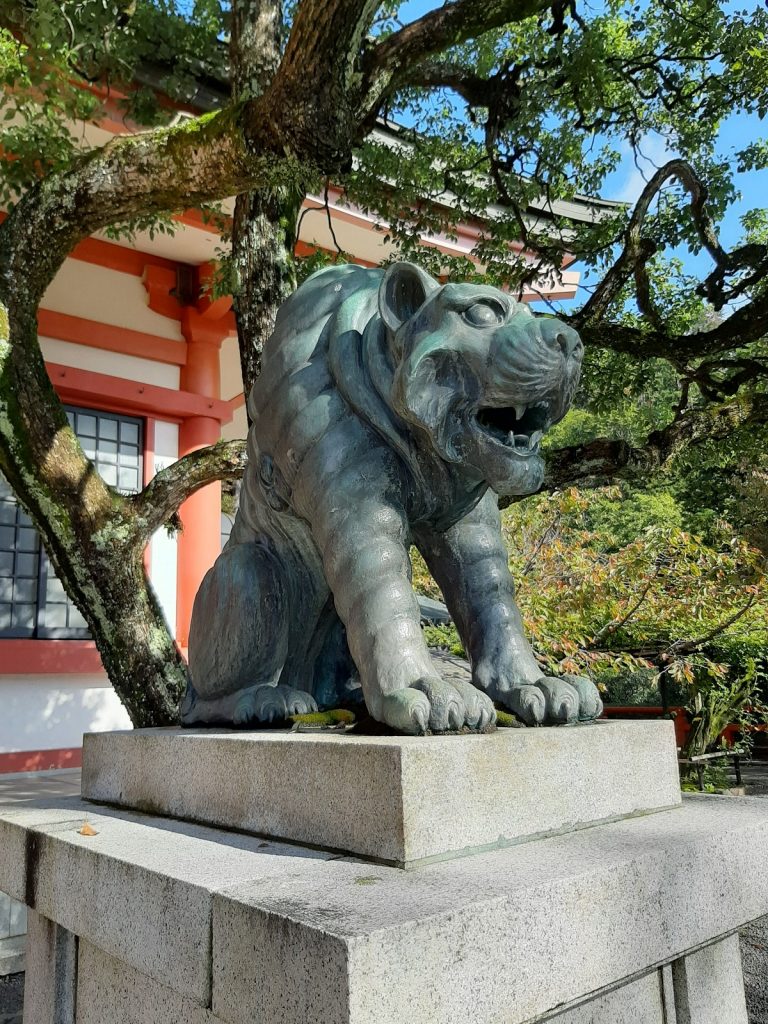
One of the Kondo’s A-Un tigers. This one is saying ‘A’
More A-Un tigers can be seen flanking the kondo, reminding you of the Bishamonten link, and looking at the floor in front of the temple reveals another unique aspect of Kurama-dera. The Kongosho, an area marked with a hexagon and triangle, is the focus point of the temple’s powerful spiritual energy that drew Gancho here in the first place. While the triangle represents the temple’s unique Sonten trinity of Bishamonten, Kannon and Gohomaoson, the hexagon represents the six ways of experiencing the world as taught in buddhism: mouth, ears, eyes, nose, body and heart. It is said that standing on the Kongosho and praying can fill you with power and help you reach your full potential.
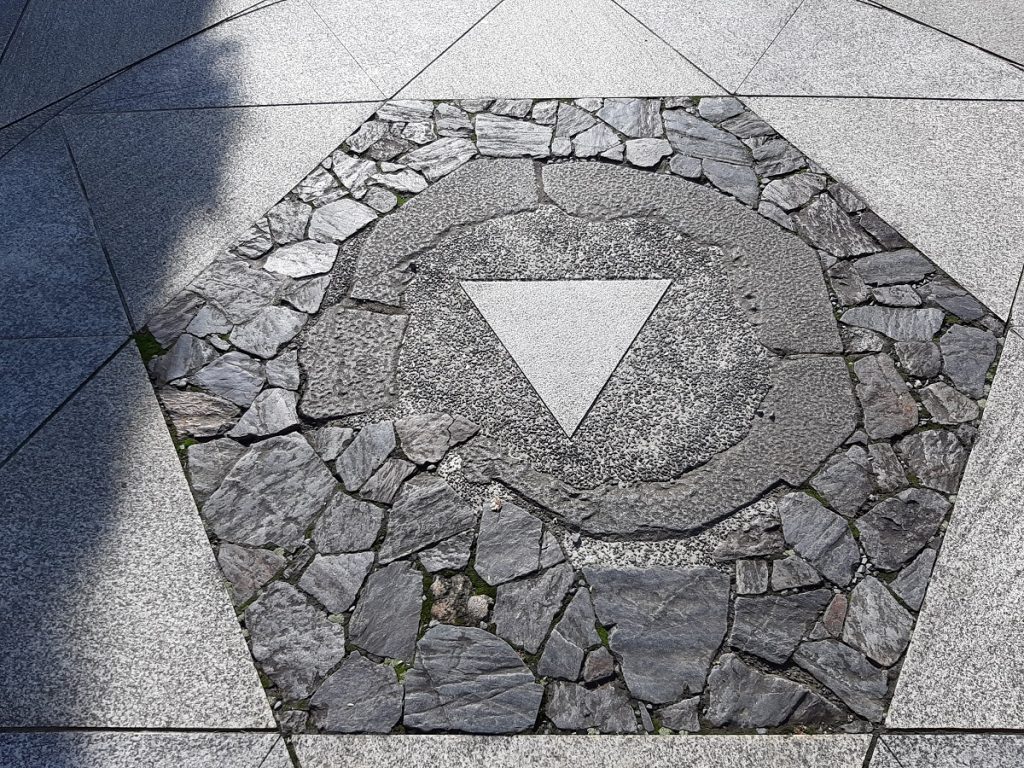
Pray here to gain some power for the downward journey!
The view from the top is beautiful and makes it clear to see why people were inspired to build a temple there. With the upward journey complete, it’s time to head down the other side of the mountain to the neighbouring valley and Kibune town. More treats await us there, so join me next time for the next part of the adventure.
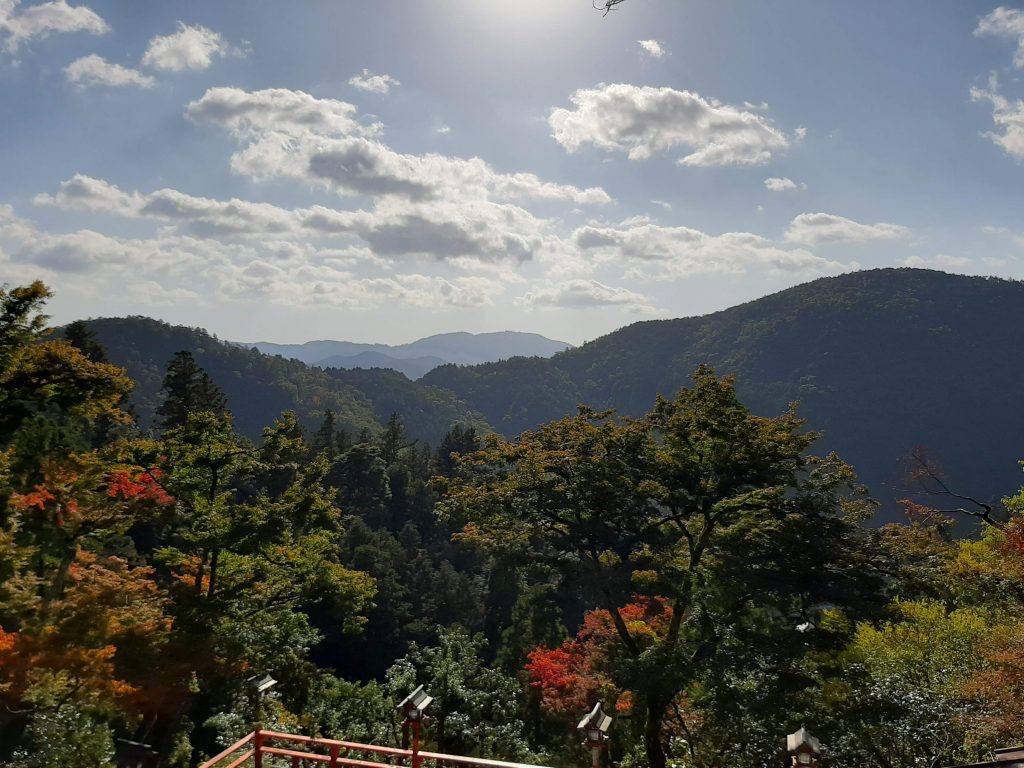
The view from the top
Harry Hammond is an Englishman lost in Kyoto, with a passion for history and architecture. He loves finding the hidden stories and history behind both the famous and the unknown buildings that shape this beautiful city.